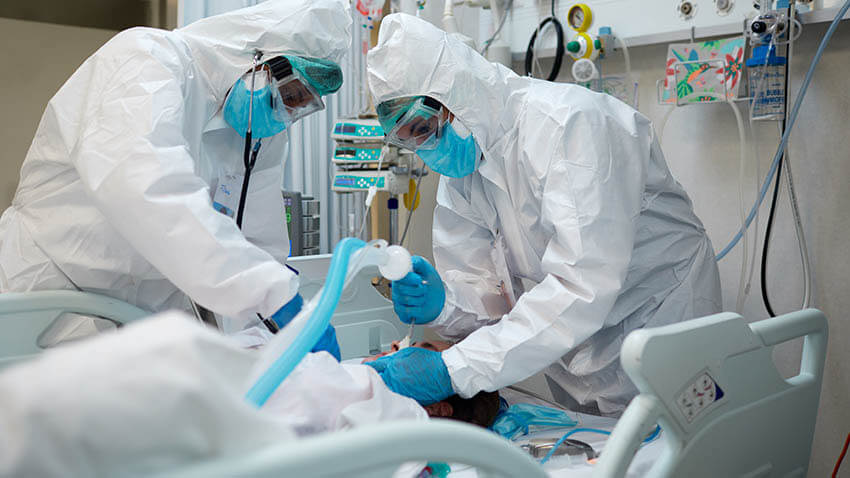
In ground reality people and health care workers are facing much more challenges. The government has provided with Ventilators and nasal cannulas but they were of no use as none of the doctors know how to use the machines. Most of the Ventilators are rusted as they haven’t been used for years, a young doctor who joined the medical front informed.
I had some basic training in and knew how to intubate a patient and provide
ventilator care,’’ he said. “But many of my senior colleagues trained in alternative therapies
asked who would take care of the patient after my shift ended in eight hours,” he said.
In public hospitals of repute, the task of monitoring ventilator care is assigned to the
seniormost nurses or resident doctors. But when Covid-19 struck, additional doctors were
recruited to such facilities with barely five days of training. “Many had been through
training that literally only told them how to switch on a ventilator,” he said. “Critical care is
a specialty that a doctor learns for two to three years,” he said. While, on paper, senior
consultants from the private sector were earmarked to help and monitor critical care, the
arrangement rarely worked.
The elation that the Mumbai-based doctor felt initially at being assigned a facility closer to
home than in the rural parts of the state soon turned into frustration. “Putting up beds and
providing oxygen supply doesn’t make for an ICU,” he said.
While lakhs were spent on buying ventilators and high flow nasal cannulas, nothing was
done to set up a 24×7 laboratory, which is at the heart of most ICU setups. “An arterial
blood gas analyzer helps doctors monitor the blood gases at regular intervals. It is perhaps
a fifth of the cost of a ventilator, but this centre didn’t have it. Our laboratory did only
simple tests and too for two hours in the morning,” he said.
Thousands of have been assigned Covid duty at such centres across the
state as a part of their bond for availing of subsidised government education. Students who
managed to get duty in Mumbai’s centres consider themselves lucky as there is a system in
place. “Many of my friends are happy… but I am frustrated and upset at how little I could
do to really help patients. And this barely a few kilometres away from Mumbai,” said the
doctor.
The BMC spends over Rs 4,000 crore on public healthcare every year, but most
corporations around it spend a fraction of the sum. “It is unfair if a person’s geographic
location dictates the level of healthcare he gets,” said the young doctor.
One of the biggest problems in the planning of Covid care is that the rapid upgradation of
smaller facilities has taken place without commensurate training for medical staff.
“Overnight, a primary healthcare is designated as a referral centre for Covid. Now, it
cannot refer a patient outside except for super specialty needs such as heart attacks. So, a
patient brought in cannot be sent out even if he cannot be intubated here… one cannot
admit that the centre is lacking on trained manpower,” said the doctor, who is now looking
for assignments in Mumbai region to avoid the same degree of disillusionment.
“I have come across ambulances working without even pulse oximeters. The focus is on
oxygen production but what about the plumbing system to supply it. There are so many
issues of maintaining pressure that the patient doesn’t get continuous oxygen flow,’’ he
said.
While medical personnel, be it an ayurveda doctor or nurse, worked hard, the atmosphere
was tinged with a fear of reprisal. “They couldn’t use sophisticated equipment out of fear
following fires in a few hospitals.” The blame game over mortality often sets off defensive
practice. “Ill-equipped ICUs are filled with stable patients so that it can be said that there is
no bed available for any new critical patient,” said the doctor. “One cannot claim that all
doctors are warriors. That is the bitter truth.”

Post Your Comments